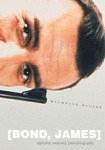
J. A. Tyler is the author of A Man of Glass & All the Ways We Have Failed as well as the forthcoming The Zoo, A Going (Dzanc Books) and, with John Dermot Woods, the image / text novel No One Told Me I Would Disappear (Jaded Ibis Press).
Monkeybicycle: Doing these weekly interviews has been exhausting and frustrating and there have been weeks where I almost just gave up, but it’s also been extremely rewarding and pushed me to read a lot of writers I normally wouldn’t have had contact with. When you started this at the beginning of the year, what was your goal with the project?
J.A. Tyler: My goal was partially the same, to read more writers, especially those whose work I longed to read but couldn’t fit into my schedule. This project made the time for me, which was as you say exhausting yet fantastic and rewarding. Also, I wanted to read books I knew I’d love but with an interview in mind, which asks for a different kind of reading. Plus, selfishly, conversations with writers about writing are the best, and I wanted to be a part of that.
Mb: For as long as I’ve been in the indie lit community, you’ve been there, doing so much for so many people while publishing and writing your own amazing novels. You’re also a high school teacher, husband, and father. How did you find the time to do so much?
J.A.T: Part of it is deception, because for a bit it seemed like I was writing 2-3 books a year, but I had written most of those in the preceding years, they just happened to be published near one another. So there was some magic in that. Also, I’m fortunate to have a supportive family who lets me write when time is available, and a job that nurtures my creative side, keeping me constantly primed. As for participation in the community of writers, I don’t know how to be a writer and not read contemporary authors, talk about their works, support their projects, and the like. That seems more a given than about the allocation of time.
Mb: The closing of Mud Luscious was a sad day for the community, and I know you took it very hard. I think everyone would agree that we were all just fortunate to have Mud Luscious for as long as we did. Now that several months have passed, how do you feel about what happened? Has time made it easier to accept? And how has life changed for you since leaving publishing behind?
J.A.T: It will never be easy to accept. Yesterday the site went officially dark, and that brought it all back again. It is so sad to birth these books alongside their authors then see them go out of print. Wrecks me. But in the wake of closure I’ve been able to return more heartily to my own writing career, which is in a phase much slower and more methodical than even before, and that has been a nice, unexpected side effect. And oddly, now that I’m no longer editor / publisher, I too wonder how I ever found the time. I thought there’d be a wealth of hours newly available, but there aren’t, so I must have been inventing that each day, which I’m sure made other parts of my life suffer. I’ll always be sad about the closure, but everything has its day. I can only hope our authors and their deserving words will find prolonged exposure at other much bigger and more steadfast venues.
Mb: Since most of your books were written well before they were published, I’m curious about the publishing order versus the written order. Were they generally published in the sequence that you wrote them, or was it more of a mix?
J.A.T: Generally speaking, the order of publication was a mirror of the writing timeframe. Some of my works though have had much greater expanses of time between finish and release than others. For instance, Inconceivable Wilson was published very shortly after the original manuscript was completed but In Love With a Ghost was completed and contracted far before it was published.
There is a sister following a river, rivulets of a lake, the waves to this man’s stillness, the way he carved wood, the extension of his hands. His sister. The sister who came in and out at the moments of his last breath, the last wind he could make, the sucking in of sun, the white into sheer black. This siter, kissing the dying man’s forehead, feeling the cold snuck into him, the burn masking corpse panic, her tears tucked too deep inside to show. Hidden in the way he couldn’t connect, the pretended want of his reach, the woman he never spoke to, the dying man, his body pinned to a bed, his sister going.
Mb: Your linguistic style changes across your novels, but it’s always unmistakably you. Along with the intense and vivid imagery, it also has a sonic quality that really gets inside you. In fact, after reading your writing, I need to be careful with whatever I write next to make sure I’m not just pretending to write a J. A. Tyler story. Talk about the importance of sentences, and how important is sound for you as a writer?
J.A.T: Gary Lutz’s “The Sentence Is a Lonely Place” says far more about the sonic quality of writing than I ever could, and though I don’t pretend to achieve more than a fraction of what he details, repetition and rhythmic tendencies have been a part of my process since the beginning. Peter Markus once talked about story repetition as a kind of chant, the incantation of narrative, a prayer that minutely deviates as our lives shift, and this has always stuck with me. It is fascinating to hear, in our mouths or our heads, how words or phrases or even whole sentences in repetition distend our reading. Joan Didion’s The Year of Magical Thinking is a prime example. Too, I teach high school theater and cut much of my early readerly teeth on plays, so a sonic and rhythmic mastermind like Shakespeare is a large part of my authorial landscape, the way he trounces on or revels in sounds is stunning and infects me as a writer.
Boy dreams an illusion that he alone can see the Stars, that he is the owner of the Stars and he took them from the Sky and chiseled them down into his pockets and walked about the Land spreading the word of Stars, planting deep their Star seeds, making up the noise of a Star song from his Star fragments, pockets weighed down:
zzzzzzzzzzzzz
This is Ocean Sky Clouds Land Mountain Sun Moon River:
ZZZZZZZZZZZZZ
Illusion. Landscape. Boy.
Mb: Your novels have a very fairytale or folkloric quality to them but coupled with an intensely visual style. What is the relationship for you as a writer between narrative and language? Does the language inform the narrative, or is language something separate that reveals the world that the narrative happens in?
J.A.T: I was talking recently with Matt Bell about my earlier novels, calling them a part of an ‘instinctual’ period in my writing career. When I first began to write, I focused most of my attention on the visual. I took an image or a series of images and let them burn through my fingers, making whatever shape on the page they chose. Now though, beginning with The Zoo, a Going (forthcoming from Dzanc Books in spring 2015) and leading into my current novel-in-progress, I’m learning how to better blend the two, putting the imagery in service of the narrative instead of the other way around, thinking more cleanly about structure and intention, planning more than spilling. This I’ve taken to calling my ‘methodical’ period, which I believe will take me up a level in terms of skills and connection to readers.
Mb: Girl With Oars & Man Dying is almost the antithesis of a fairytale, but it still captures that wide-eyed childish quality that much of your work breathes. It’s destructive and collapsing but it filled me with hope, or at least filled me with beauty and touches of the sublime, which is maybe better than hope. I think the best of your writing hits on this, and I see it very clearly again with Water. These two novels, while certainly feeling very much like J. A. Tyler books, feel different. Can you talk about these two and how they came about?
J.A.T: Girl With Oars & Man Dying came from the image of the clouds as I flew home from a literary conference. I thought about what it would be like to row a boat through them, and I wondered what would be beneath this rowing. What was beneath became that book, which is as intensely visual as any of my earlier, poetically painted works.
Water was actually written as three separate biblically harnessed novellas, and then spliced together into the full novel at the very end. Originally it was a book about children living in an elementary school, their parents all gone, and them as violent as any children would be without buffer or censorship; and it was a book about a single leftover boy searching for the last girl in the world in a desert of dirt and dust and roving herds of mad people, searching to re-populate; and it was a book re-telling the Noah story, how a flood would come about and how the making of a boat would look. These became Water.
Mb: Colony Collapse is your most recently released novel and it reminds me of both Peter Markus and Variations of a Brother War, but it seems thematically more connected to Girl With Oars & Man Dying and Water, in that it’s a novel that is constantly defining and reinventing itself. What is it about creation and destruction that fuels your work?
Mb: I believe every writer, at their very deepest root, writes about one concept for the duration of their career. They write it over and over again, in similar or varied forms, in different depths beneath mixed textures. They write it even when they try not to write it. They write it without writing it. It is always what they write. For me, that one concept is creation and destruction. I write it in the form of births and deaths. I write it through apocalypse. I write it in the break-down of relationships. And it all stems from a fear of death. I fear dying more than anything else. I am a logical, concrete thinker, so anything unknown, like the future, like death, tenses my mind in every unfilled moment. So, in the end, I’m either trying to understand death or to write my way out of it, knowing neither is possible.
Dear Woods, Thank you for all the trees.
When I yawn, second house and bear ash exhale over my deer-tongue.
There is more to bears and houses than death. There is more to belief than dying. There is more to love than what love is or has been.
Mb: Mud Luscious Press and your own writing tend to be characterized as experimental literature. Do you find any limits in experimental writing? Do you find yourself seeking more narratively driven work since stepping away from Mud Luscious?
J.A.T: To me, the nature of “experimental” or “innovative” literature means there are no boundaries, no limitations, though there is also the obviously sticky idea of labeling anything “experimental” or “innovative.” With Mud Luscious Press, I tended to dub the books “hybrid” mostly, or to simply call them “driven” or “aggressive” literature, which is what I saw at each core. And though I know the nature of every reader is different, MLP books were all guided by narrative, just some in more challenging or upended ways than the norm. As for my own work, I’ve been trying to clarify or “clean” my narrative sensibilities for quite a few years but am only now feeling I have an even marginal handle on it.
Mb: I like where you’re heading with this methodical period as it’s something I think often about. When experimenting on the sentence level, there’s a limit, I think, of how far you can push, whereas structure sort of opens up entire worlds of possibilities. Do you feel that your writing has more room to roam in this new period?
J.A.T: The benefit for me, in this new, more careful approach to my writing, is that I have the chance to gain a much wider readership, since I won’t automatically be negating or distancing myself from those readers who love the sound and ping of language but demand or require a clearer story to lead them forward. I hope the room to roam has always been there, only now I’m really learning how wide that space is, and how to more appropriately use it.
Mb: What are some of your favorite books you read this year? And what are some of your favorites published this year?
J.A.T: I re-read J. D. Salinger’s Nine Stories and was blown away, much more so than I’d been in previous reads. I just finished All the Pretty Horses for the first time and am still in shock about the level of its brilliance on both a narrative and a sentence level. Also on this “oldies” list this year are American Psycho, which is pretty spectacular, a return to Gary Lutz’s A Partial List of People to Bleach (in Future Tense’s newly expanded edition) to find it even better than I thought the first time, and Eggers’ Zeitoun, which is both heartfelt and heart-rending. Of the books published more recently, I delighted whole-heartedly in Chris Ware’s Building Stories, Casey Hannan’s Mother Ghost, Laird Hunt’s Kind One, Aase Berg’s Dark Matter, Mary Ruefle’s Madness, Rack, and Honey, and Matt Bell’s In the House Upon the Dirt Between the Lake and the Woods.
Mb: What publishers and authors keep you excited about the indie lit community?
J.A.T: I always look forward to the wares from Two Dollar Radio, Publishing Genius, Black Ocean, and Wave Books, among others. Curbside Splendor is quickly growing into a new favorite of mine too. And I’ve been privileged to get a little sneak peek of some manuscripts by Selah Saterstrom, Robert Kloss, and others and those kinds of reads keep me insanely pumped for the indie lit community (and beyond).
Mb: What are some of your proudest moments from Mud Luscious Press?
J.A.T: It sounds corny I’m sure, but every moment in the growth and life of MLP was a moment of pride for me. Making our first quarterly issue, transitioning into chapbook production with Ken Baumann’s poem, being a part of Molly Gaudry’s first book, and then everything else that was to come. We had amazing designers, fantastic artists including Matt Kish, tremendous staff, and a chance to publish so many of the best contemporary writers I can’t even begin to name them all.
Mb: What are some of the most important lessons you learned about your own writing from being a publisher/editor?
J.A.T: Honestly, more than I could ever put to the page. Getting to publish / edit the likes of Matt Bell, Robert Kloss, Brian Evenson, Norman Lock, Michael Martone, Ken Sparling, Shane Jones, Michael Kimball, and Blake Butler (among so many others), taught me about the speed of phrases, the lines of narrative, the depth of characters, the appropriation of emotion, and a thousand other aspects of the craft that might otherwise have remained a mystery to me.
Mb: This methodical period you’re entering has definitely piqued my interest. Can you tell us anything about what you’re working on now?
J.A.T: Happily: The novel I’m working on is about pirates and ghosts and mummies and a township where it never stops raining. These twin sons, their father is a pirate, and their mother is turning into a ghost, but before she goes ghost she wants to mummify these sons, to preserve their childhoods prior to the infection of sadness. But the boys fall in love with a ghost of a girl who moved in up the street, and they’ve found a complex of caves beneath the town where they hope to prove their pirate worth, all while their father is searching for a vampire to make him immortal. The rest, well, we’ll see where it all ends up.
Read more from / about J.A. Tyler here.
Edward J. Rathke is the author of several books, one of them published [Ash Cinema, KUBOA Press 2012], two more coming out soon, as well as various short stories online and in print. He writes criticism and cultural essays for Manarchy Magazine and regularly contributes to The Lit Pub where he also edits. More of his life and words may be found at edwardjrathke.com.




